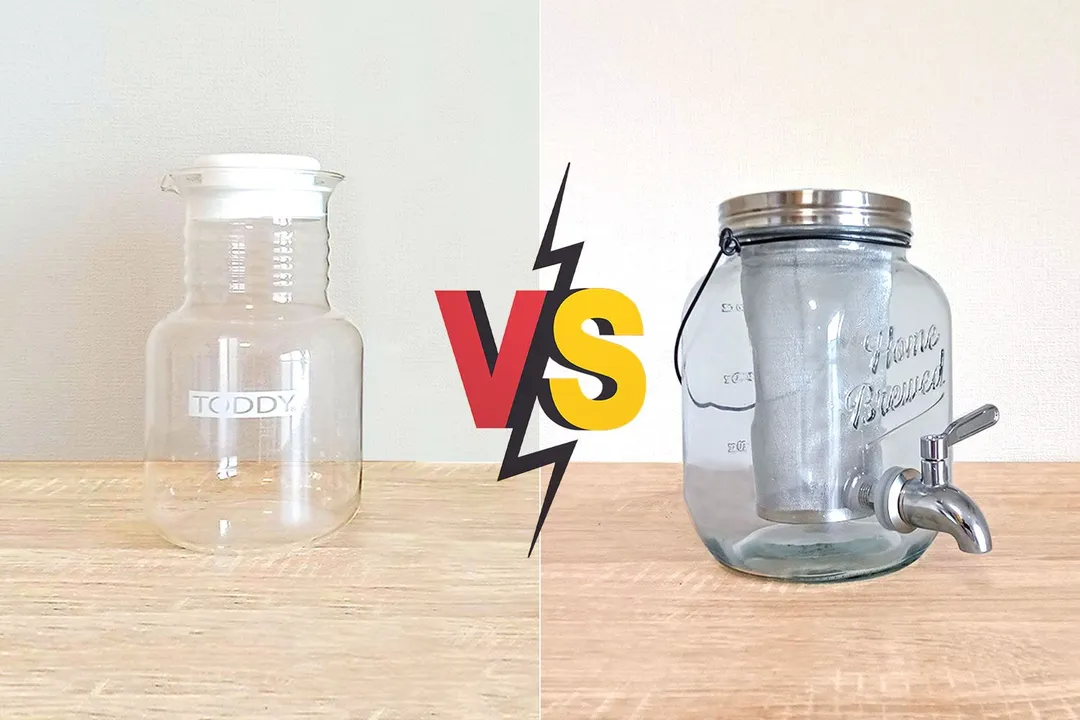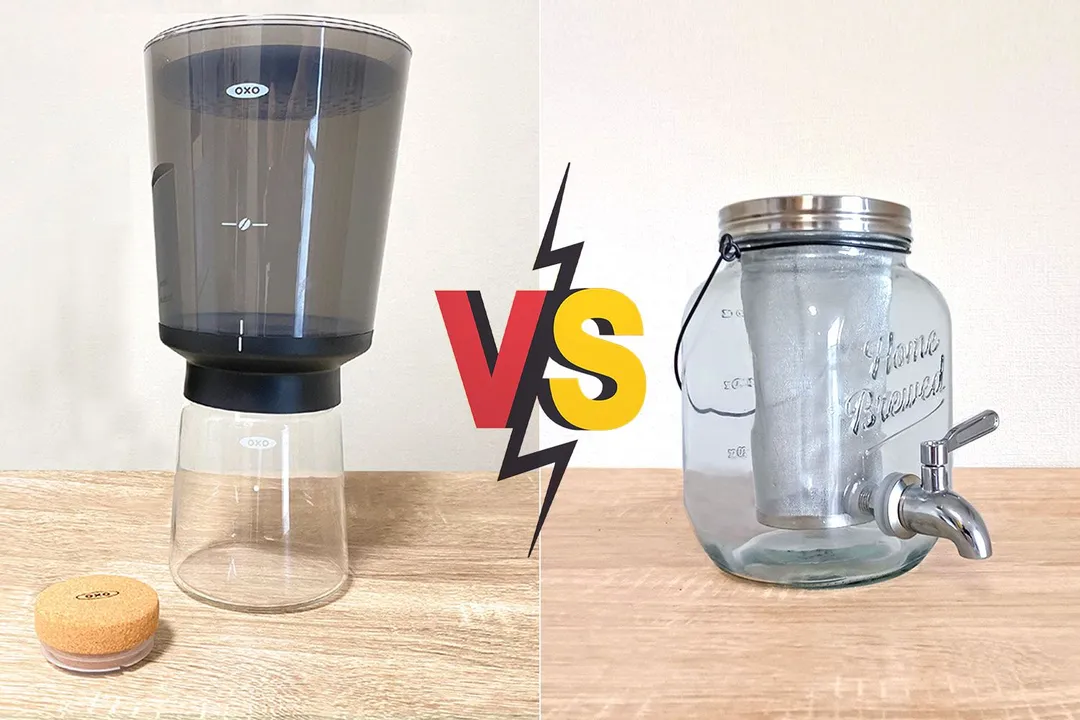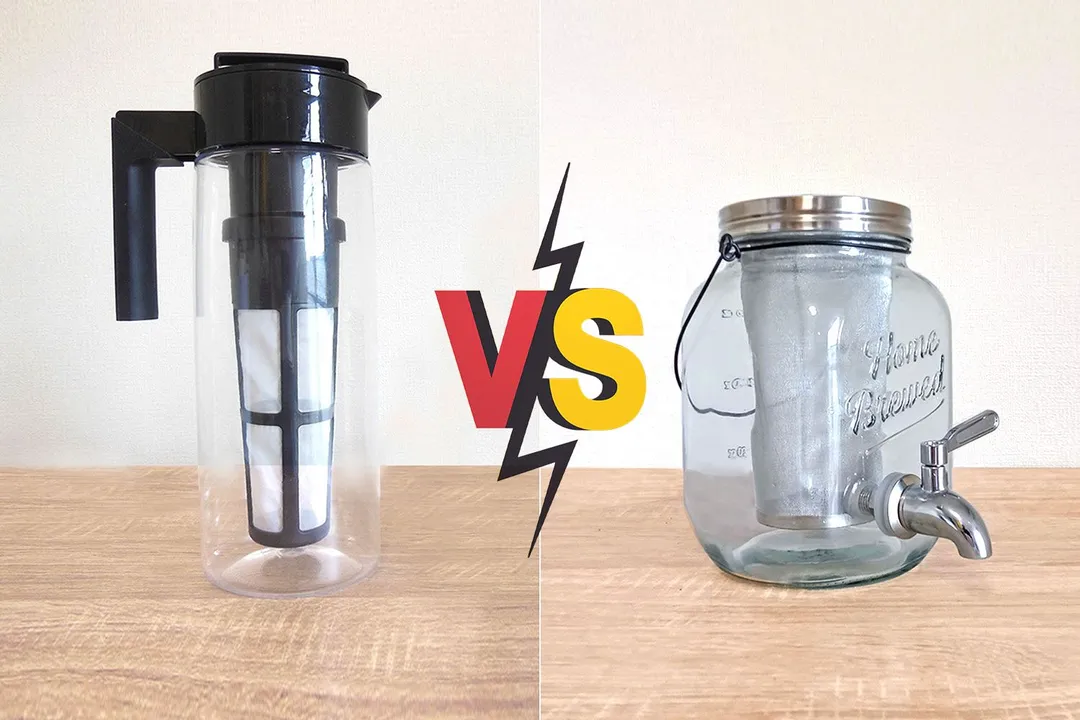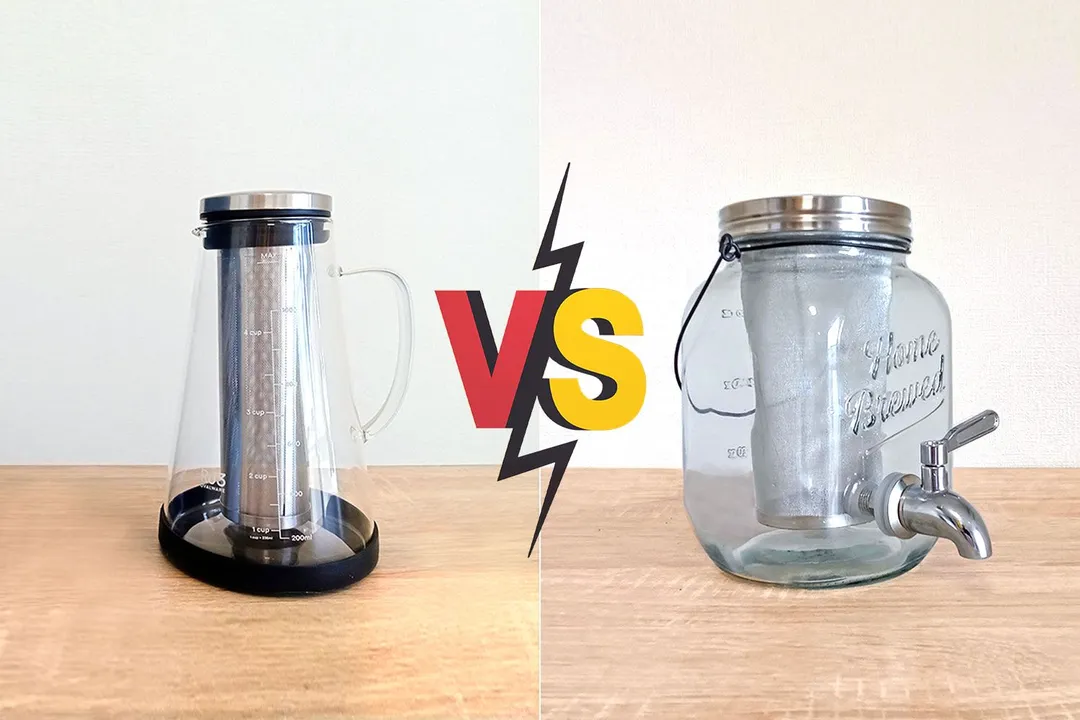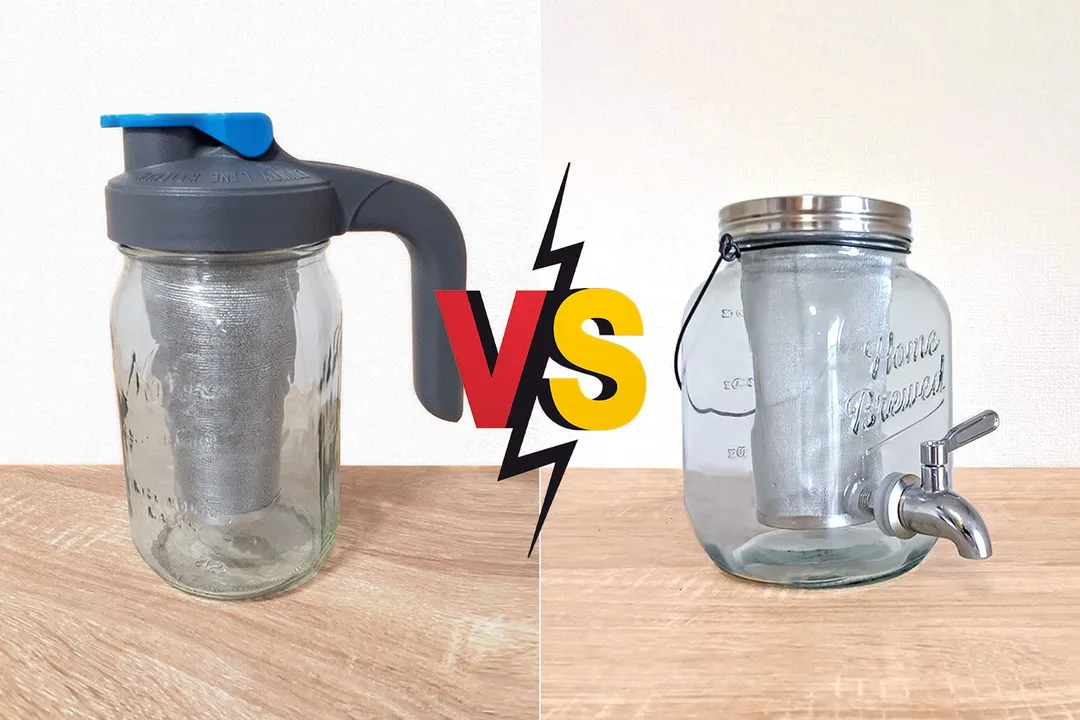Our recommendations are made independently through Research & Testing. We may receive commissions from purchases made via our links.
Aquach vs Willow & Everett Side-by-Side Comparison
Aquach cold brew coffee maker vs Willow & Everett mason jar. Style that overlooks good brew fundamentals and a brewer that brews well.
Aquach Cold Brew
Tested Using Methodology v1.0Willow & Everett 1 Gallon
Tested Using Methodology v1.0
Overall Verdict
Aquach is a beautifully designed cold brew coffee maker with a unique easy-to-lift filter and an airtight stopper. Its only flaw is the fine stainless steel lasered filter which is not porous enough for producing a high quality brew. Also, the glass carafe is delicate.
On the plus side, there are three sizes: the 34 oz and 51 oz brewers can both fit a gallon-sized door bin, whereas the 68 oz one is tall and slender and can easily fit into any refrigerator door.
The Willow & Everett, on the other hand, is meant for brewing and dispensing from a refrigerator shelf. The brew quality is about the best you can get for an immersion filter brewer, and this makes it an all round better proposition than the Aquach.
The Willow & Everett, however, is not without its flaws. Dispensing through the tap can be temperamental and often not so smooth. The last 20% of the brew has to be poured out from the top, which is an inconvenience. There’s not much of a comparison to be drawn between these two since the Aquach is a closer match to similar carafe style brewers.
Pros & Cons
- Stylish decanter
- Lid design
- Decanter handle
- High-quality filter
- No plastic parts
- Funky design
- Brew ratio
- Brew quality
- Tap dispenser
- Poor brew quality
- Lid design
- Weak glass around tap
- Tap is temperamental
- No literature
Key Specs
Where to Buy
*You help support HealthyKitchen101's product testing and reviews by purchasing from our retail partners.
Analysis and Test Results
Brew Quality
Bouquet
Drinkability
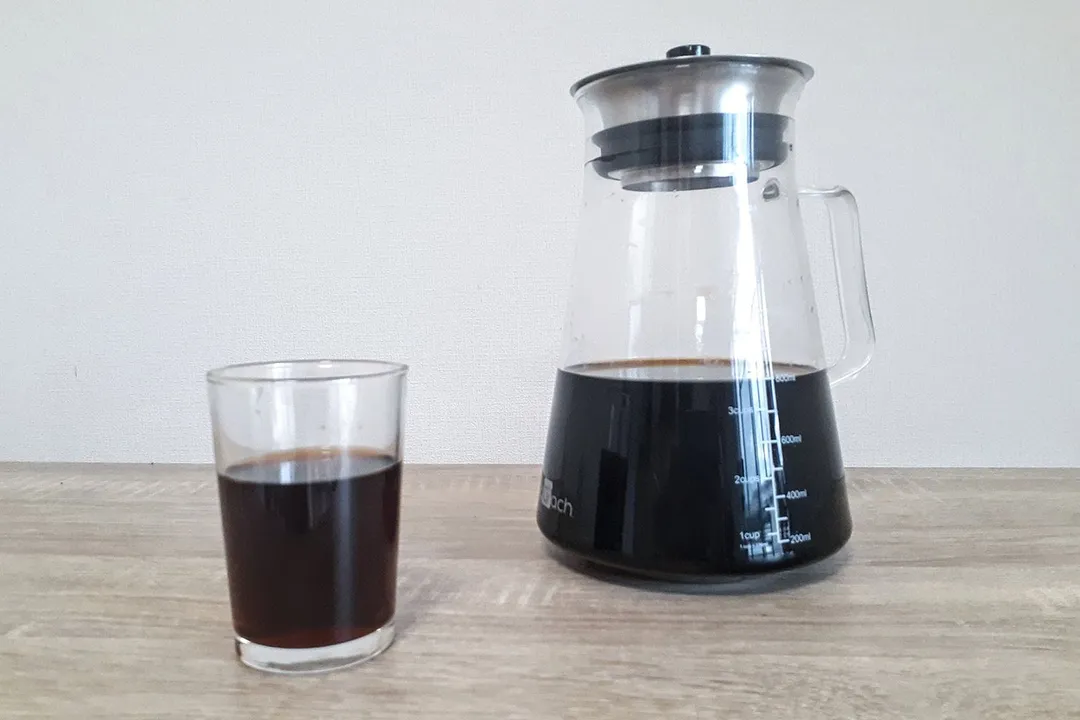
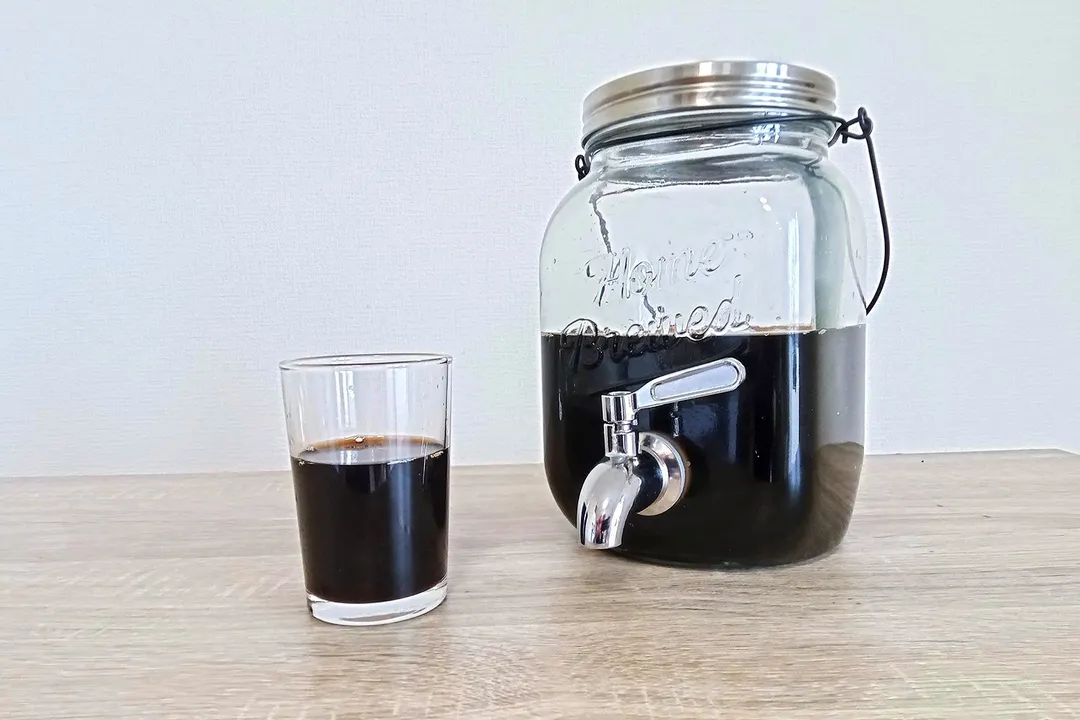
Sediment
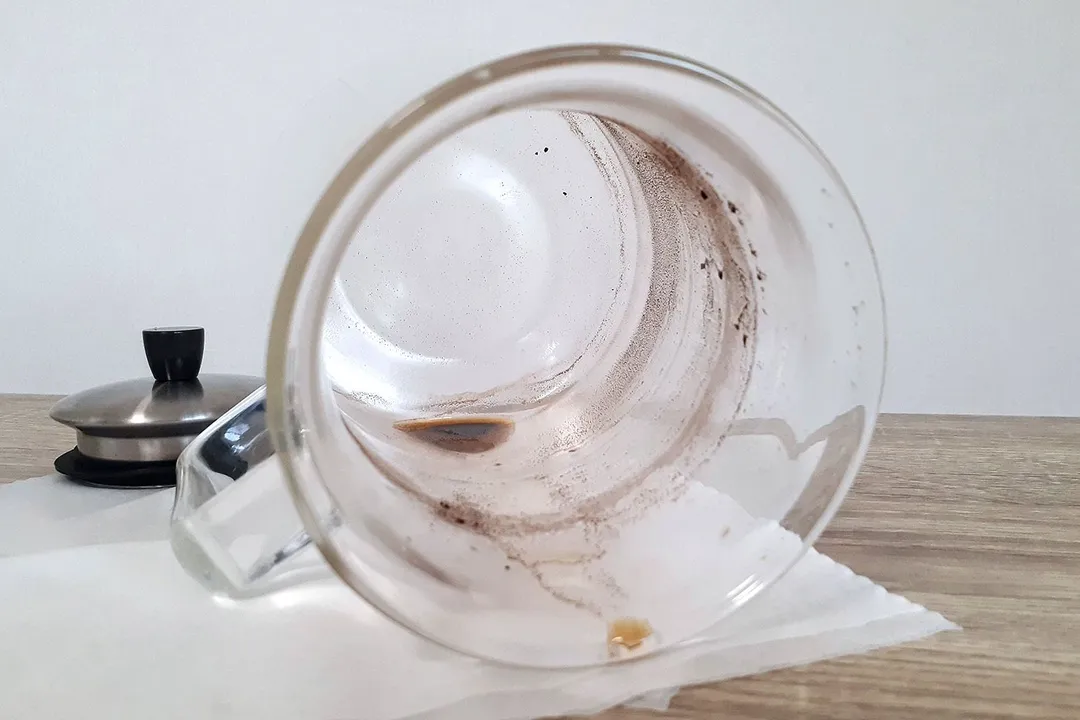
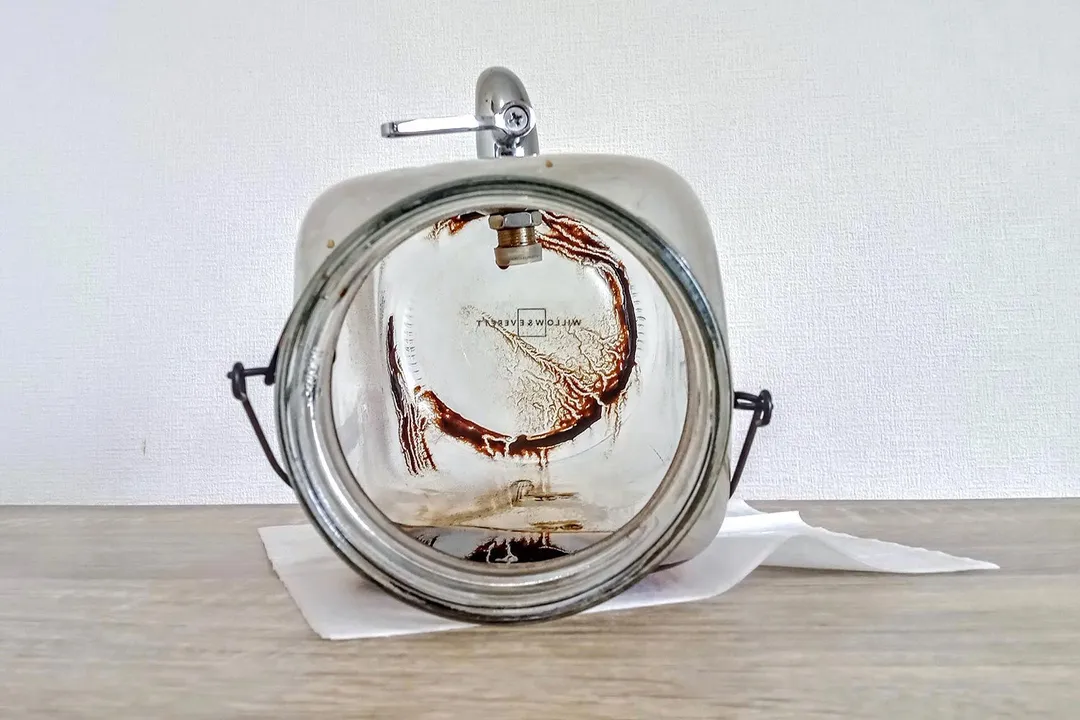
Design
In the Box


Decanter

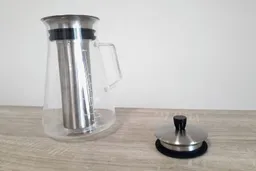
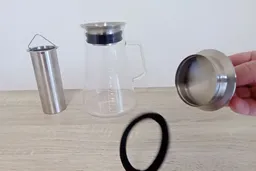
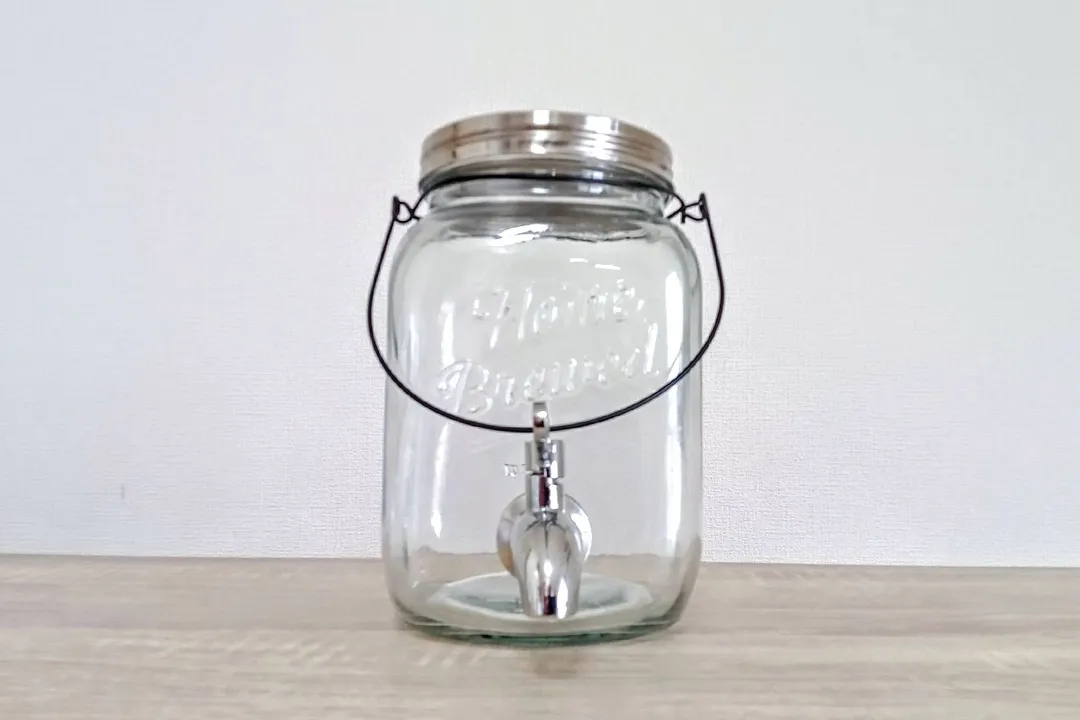
Stopper / Lid
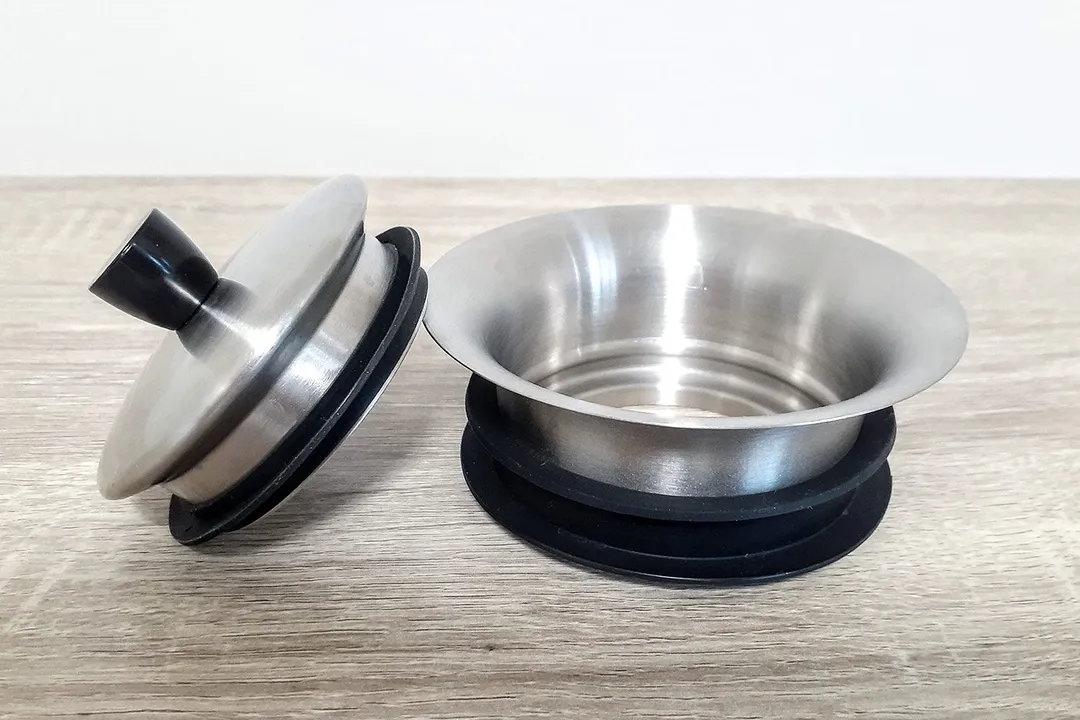

Filter
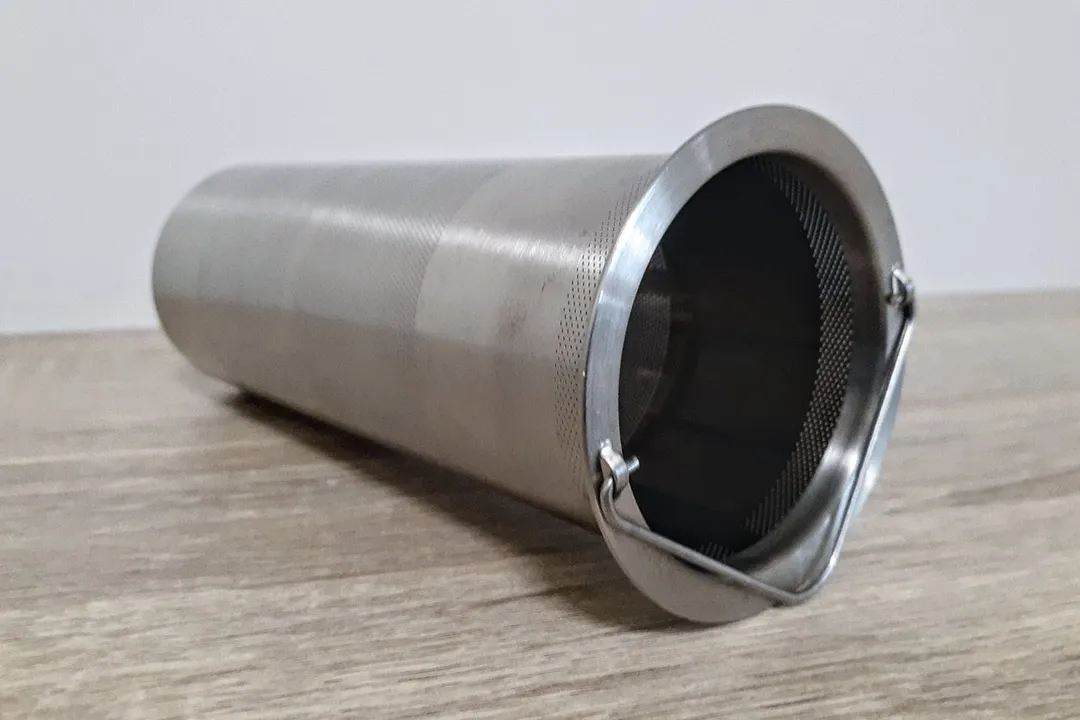

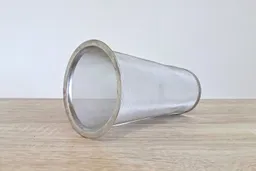

Build Quality
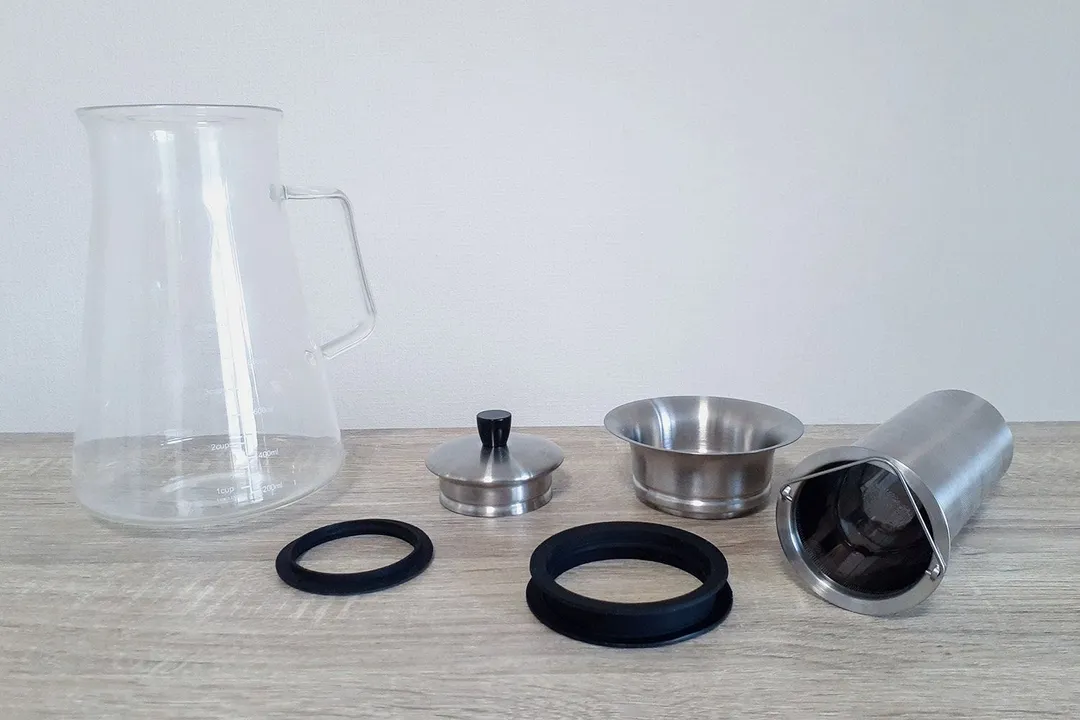

Usability
Brewing

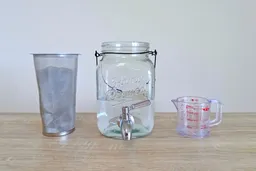

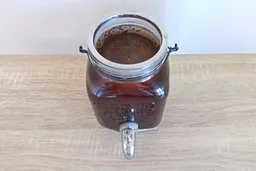
Decanting
Cleaning and Storage
Behind the Comparison
Roger Shitaki is a writer, author, and editor. His niches are household appliances, health & wellness, and travel. He’s a freelance contributor to a Tokyo lifestyle website and a leading ophthalmology magazine in Asia.

